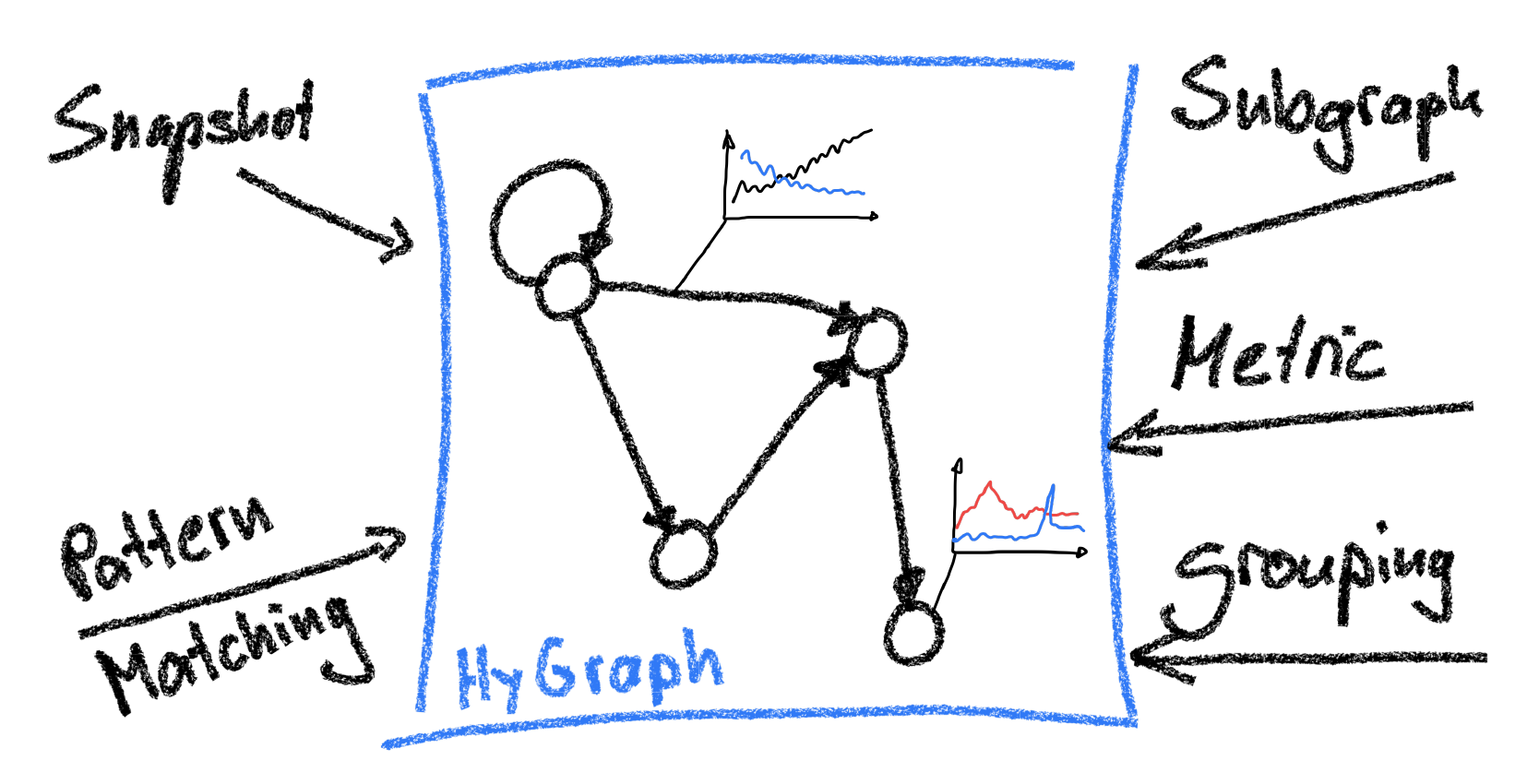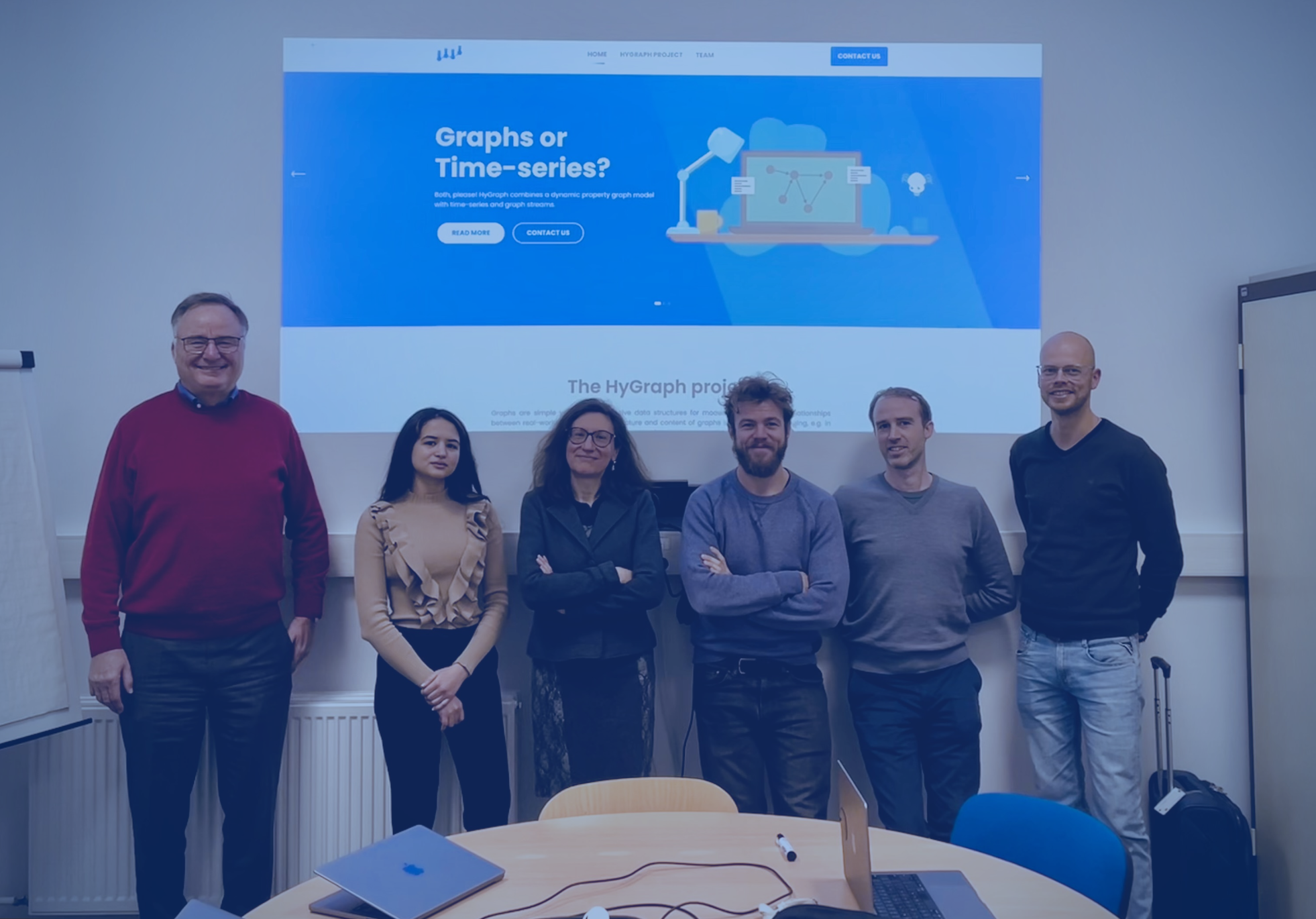Hybrid Data Model
The HyGraph model combines temporal graphs and time series into a single
abstraction. Real-time graph streams are used to continuously update the hybrid graph. The model
includes data representation, maintenance operations, updatability, and retrieval and querying
of substructures while ensuring consistency with inference or integrity rules.
One of our tasks is to design a flexible data model
that can handle dynamic relationships and time-series data.
Two potential designs have already been
proposed, and suitable types and properties need to be defined to encode
evolving input data.
We will support maintaining and updating the hybrid graph data model as new data
arrives,
and the focus is on developing maintenance algorithms for update, insert, and delete operations.
The plan is to use the properties of the hybrid graph to group maintenance operations as bulk
operations and to enforce consistency using mechanisms similar to key constraints for property
graphs.


















